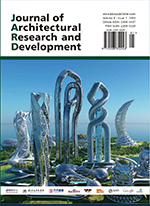Abstract
Wooden buildings play a very important role in China’s construction and landscape architecture industry. In order to explore the weathering characteristics of the surface layer of landscape wooden buildings, the main causes of weathering were analyzed on the basis of summarizing the common types of weathering characterization. The results showed that the weathering characterization was mainly reflected in the surface defects of wood structures, such as cracking, discoloration, peeling, wind erosion wear, and so on. The coating technology on the surface of constructions was the main artificial factor affecting the surface defects of constructions. In the case of similar surface decoration conditions, sunlight and moisture were the main natural factors affecting the weathering of wooden buildings, which will promote the process of weathering.
References
Li Y, 2018, Analysis of Wood Structure Architecture and Design in Landscape Ecological Landscape Application. Intelligent City, 4(20): 34–35.
Luo J, 2018, Ecological and Zen Culture Infiltration and the Return of Timber Structure. Chinese & Overseas Architecture, 2018(07): 48–52.
Chen Z, 2019, Comparative Study of European Classical Architecture and Chinese Traditional Architecture Under Weathering Phenomenon. City & House, 26(04): 165–167.
Sun Y, 2020, Apply of Different Structural Materials in Modern Timber Buildings. Architecture Technology, 51(03): 272–274.
Tang S, 2022, Revitalization and Utilization of Tang Style Wooden Building Construction Technique: Reflection and Exploration on the Construction of Baoshan Temple. Architectural Practice, 2022(11): 172–177.
Yan D, 2018, Discussion on the Construction Pattern of Ecological Security Barrier System of “Two Screens and Four Zones” in Inner Mongolia. Protection Forest Science and Technology, 2018(06): 78–79.
